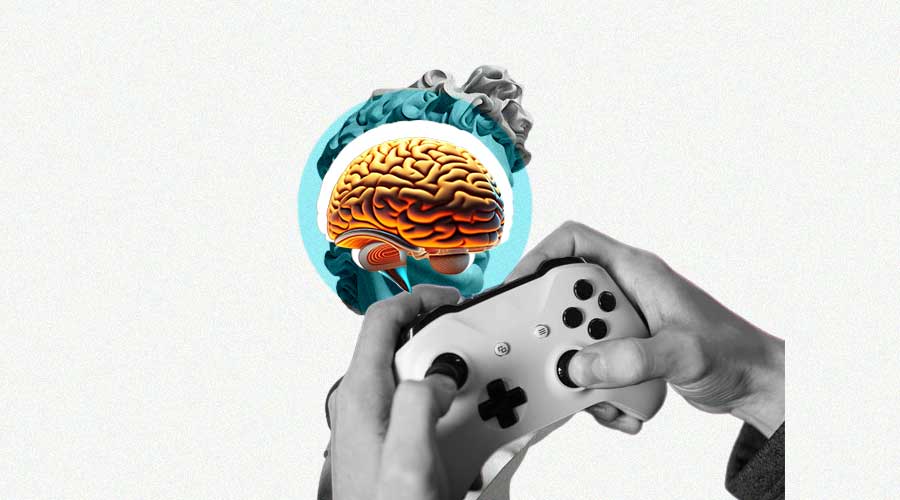
Revolutionizing Gaming Minds: The Synthesis of AI and Neurogaming Experiences
Introduction:
Embark on a journey into the cutting-edge world of gaming where artificial intelligence and neuroscience converge to birth a groundbreaking phenomenon—Neurogaming. In this exploration, we delve into the intricacies of how AI influences the realm of gaming, elevating it to new heights. “Gaming with a Brain: Neurogaming and the Influence of AI” unveils a revolutionary fusion where players interact with virtual landscapes using their thoughts. As we navigate through adaptive gameplay, personalized storylines, and the ethical considerations surrounding neural data, discover how the synergy of AI and Neurogaming is reshaping the future of interactive entertainment, promising an unprecedented era of cognitive play experiences. Welcome to the forefront of gaming’s evolution, where the mind becomes the ultimate controller.
The Confluence of Neuroscience and AI:
Understanding Neurogaming:
Neurogaming represents a paradigm shift in the gaming industry, leveraging advancements in neuroscience and AI to establish a direct link between the human brain and video games. This synergy opens up possibilities for a more intuitive and personalized gaming experience, where the player’s cognitive responses become an integral part of the gameplay.
Brain-Computer Interfaces (BCIs):
At the core of Neurogaming lies the development of Brain-Computer Interfaces. These interfaces allow for direct communication between the brain and a computer, enabling players to control aspects of the game using their thoughts. AI algorithms play a pivotal role in interpreting neural signals, translating them into actionable commands within the gaming environment.
Enhancing Gameplay through Neural Insights:
Adaptive Difficulty Levels:
AI in Neurogaming analyzes the player’s cognitive state in real-time. By understanding factors such as attention, stress, and engagement levels, the game can dynamically adjust its difficulty. This adaptive approach ensures that the gaming experience remains challenging yet enjoyable, catering to the player’s cognitive state.
Personalized Storylines:
Neural data can provide insights into a player’s emotional responses during gameplay. AI algorithms use this data to adapt and personalize in-game narratives, ensuring that the story unfolds in a way that resonates with the player’s emotional state. This level of personalization creates a narrative experience that is uniquely tailored to each individual.
The Influence of AI in Neurogaming:
Real-time Cognitive Feedback:
AI algorithms process neural data in real-time, providing players with valuable insights into their cognitive performance. This feedback loop fosters a deeper understanding of one’s cognitive abilities, encouraging players to enhance their focus, concentration, and overall cognitive skills through gameplay.
Immersion through AI-generated Environments:
AI contributes to the creation of immersive virtual environments by dynamically generating landscapes based on the player’s neural responses. Whether it’s adjusting the ambiance, introducing challenges, or altering the visual aesthetics, AI-driven environments respond to the player’s cognitive cues, deepening the sense of immersion.
Challenges and Considerations:
Ethical Use of Neural Data:
The integration of AI with neuroscience raises ethical concerns regarding the collection and use of neural data. Protecting the privacy and consent of players becomes paramount, necessitating clear guidelines on the ethical use of neural data in Neurogaming. Developers must prioritize transparency, informed consent, and robust security measures to address these concerns.
User Training and Adaptation:
As Neurogaming relies on interpreting neural signals, users may require training to effectively control the game using their thoughts. AI algorithms must be adaptive enough to accommodate individual differences in neural patterns, ensuring a seamless and user-friendly experience. Overcoming the learning curve for users and making Neurogaming accessible to a broader audience is a key challenge.
The Future of Neurogaming:
Health and Wellness Applications:
Beyond entertainment, the integration of neuroscience and AI in gaming has potential applications in health and wellness. Neurogaming can be harnessed for cognitive rehabilitation, stress management, and even therapeutic interventions. The gaming industry, in collaboration with healthcare professionals, can explore ways to leverage Neurogaming for positive health outcomes.
Expanded Accessibility:
The ongoing development of user-friendly BCIs and advancements in AI technology will likely lead to increased accessibility of Neurogaming. As the barriers to entry lower, a broader audience can enjoy the benefits of this innovative gaming experience. This inclusivity aligns with the broader goal of making gaming more accessible to diverse demographics.



